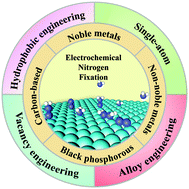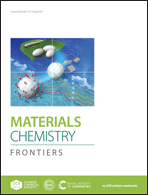Recent advances on electrocatalytic fixation of nitrogen under ambient conditions
Abstract
As one of the most important chemicals for human beings, ammonia is produced by the well-known Haber–Bosch process, which consumes tremendous amounts of energy and simultaneously results in unwanted emissions. Very recently, the electrochemical nitrogen reduction reaction (e-NRR) emerged as an intriguing technique for nitrogen fixation, which can be driven by sustainable power sources, such as solar and wind energy. Moreover, ammonia produced by e-NRR can be realized under mild conditions. Nevertheless, the electrochemical nitrogen fixation suffers from a low yield of ammonia due to the scaling relations of intermediates and competing hydrogen evolution. In addition, the progress in the e-NRR is also hindered by unreliable ammonia measurements. In this review, we summarize and discuss the recently reported e-NRR electrocatalysts, and highlight the e-NRR mechanisms and promising strategies for the rational design of e-NRR electrocatalysts. Importantly, the nitrogen contaminations, which resulted in false positive results, are also mentioned and a rigorous ammonia detection method is presented. Moreover, the current challenges and prospects for e-NRR catalysis are discussed. This review gives a fresh impetus to the rational design of high-performance e-NRR electrocatalysts.

- This article is part of the themed collection: 2021 Materials Chemistry Frontiers Review-type Articles


 Please wait while we load your content...
Please wait while we load your content...